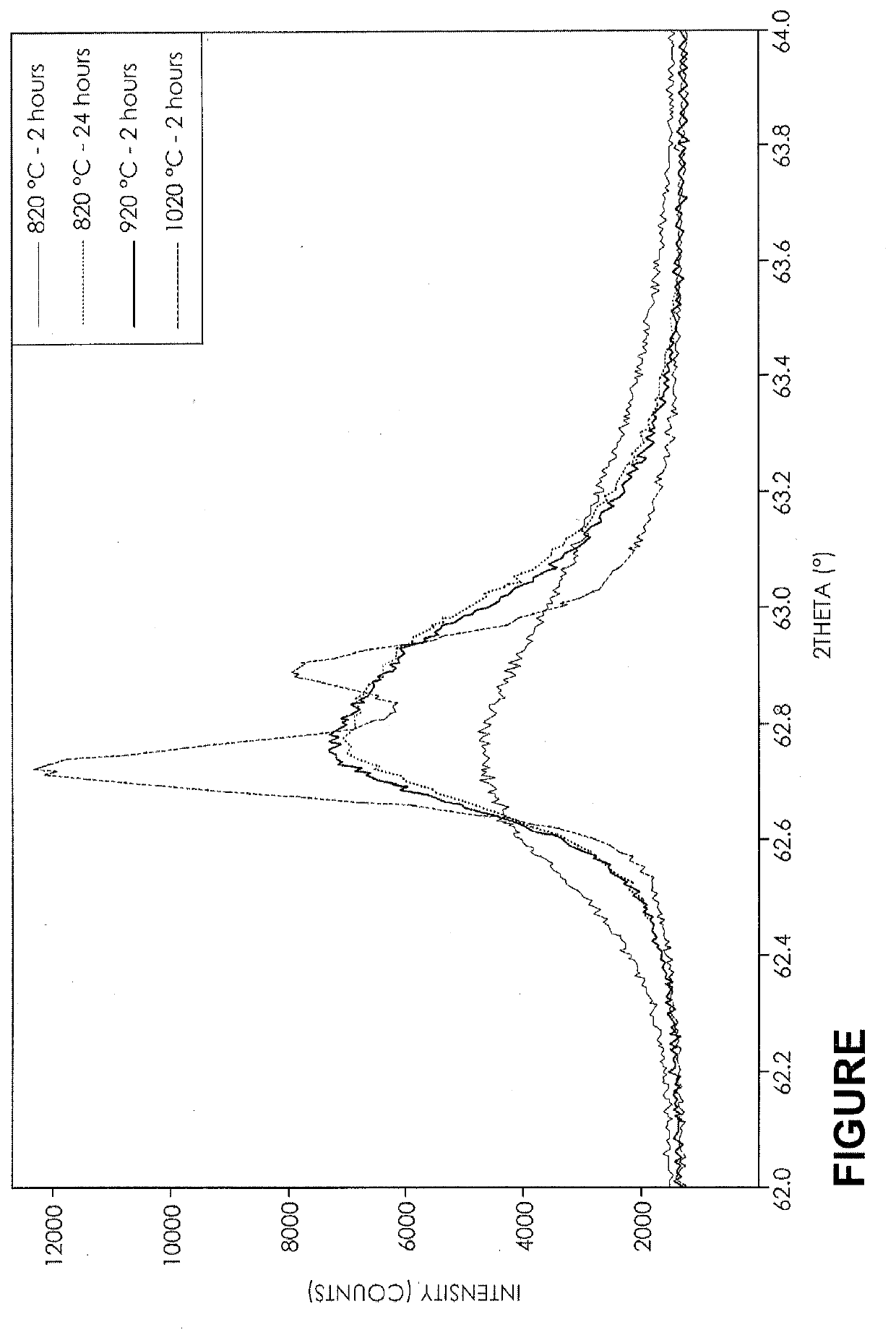Modified Black Spinel Pigments For Glass And Ceramic Enamel Applications
- Summary
- Abstract
- Description
- Claims
- Application Information
AI Technical Summary
Benefits of technology
Problems solved by technology
Method used
Image
Examples
Embodiment Construction
[0017]The inventors herein have discovered that a black pigment with a reduced CTE can be obtained by modifying the composition or structure of a standard copper chromite pigment, Cl Pigment Black28.
[0018]The general formula of the modified spinel pigment is AaCubMncCrdO4, where A is a secondary modifier, and where a+b+c+d is approximately 3, and where the cations assume common valence states that leave the formula approximately uncharged. Mn tends to give mixtures of +2, +3, and +4 valence states in solid state structures, giving flexibility to the formulas with respect to levels of metal cations such as Al, Mg, Zn, Ti, Co, and Ni. Relative to the CuxMnyCrzO4 matrix, the use of secondary modifiers, including Mg, Fe, Zn, Al, and Sb, have resulted in reduced CTEs when fired at 820° C. and tested in pigmented enamel expansion bars. It is also anticipated that CTE reductions to CuMnCr matrices will be afforded by incorporation of one or more of the following metal oxides: Sc, Ti, V, Co...
PUM
| Property | Measurement | Unit |
|---|---|---|
| Temperature | aaaaa | aaaaa |
| Temperature | aaaaa | aaaaa |
| Temperature | aaaaa | aaaaa |
Abstract
Description
Claims
Application Information
 Login to View More
Login to View More - R&D
- Intellectual Property
- Life Sciences
- Materials
- Tech Scout
- Unparalleled Data Quality
- Higher Quality Content
- 60% Fewer Hallucinations
Browse by: Latest US Patents, China's latest patents, Technical Efficacy Thesaurus, Application Domain, Technology Topic, Popular Technical Reports.
© 2025 PatSnap. All rights reserved.Legal|Privacy policy|Modern Slavery Act Transparency Statement|Sitemap|About US| Contact US: help@patsnap.com

